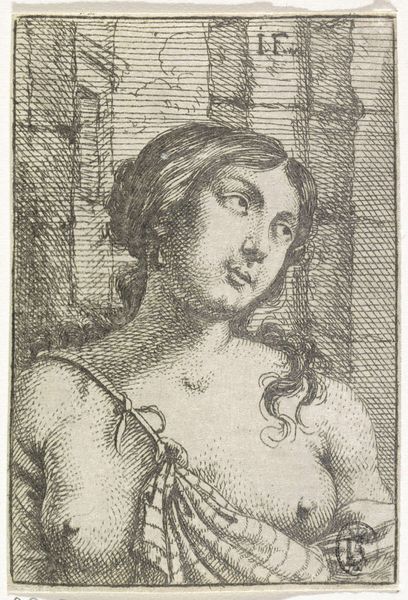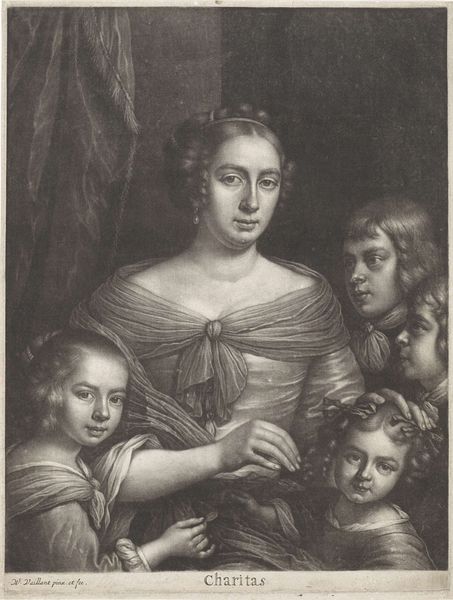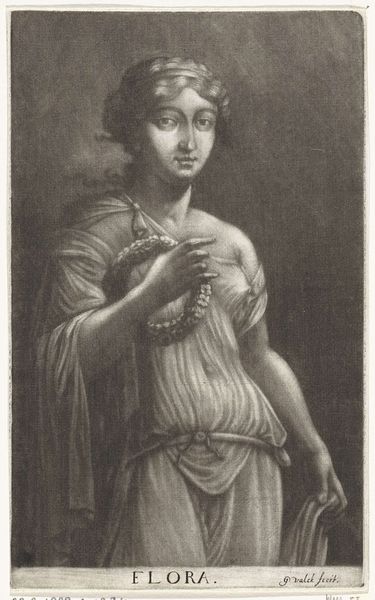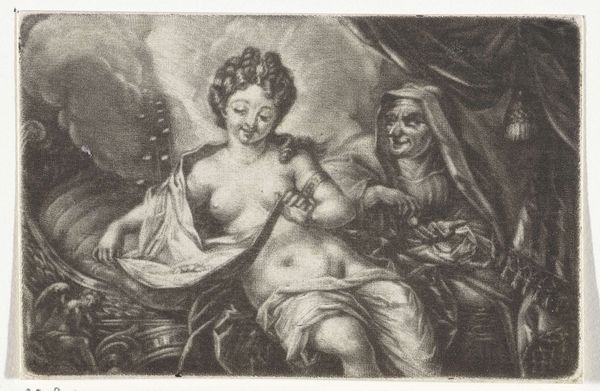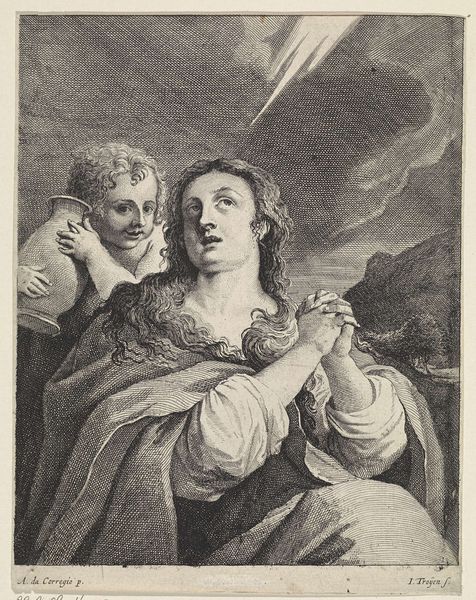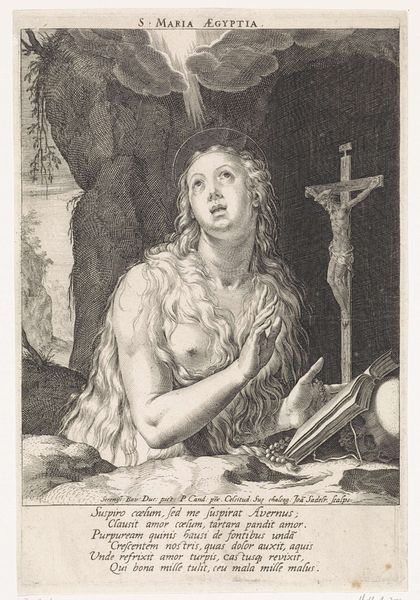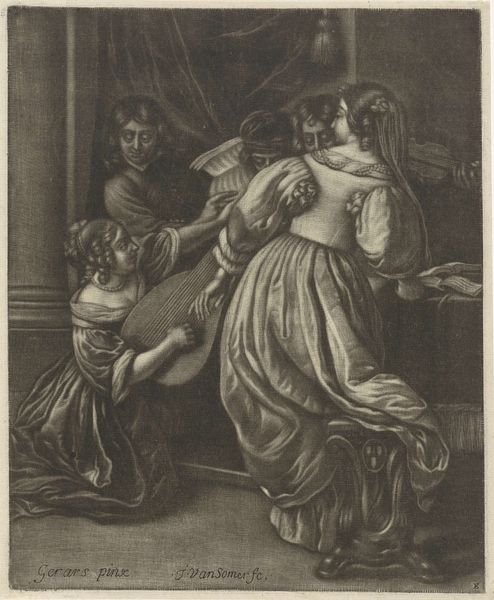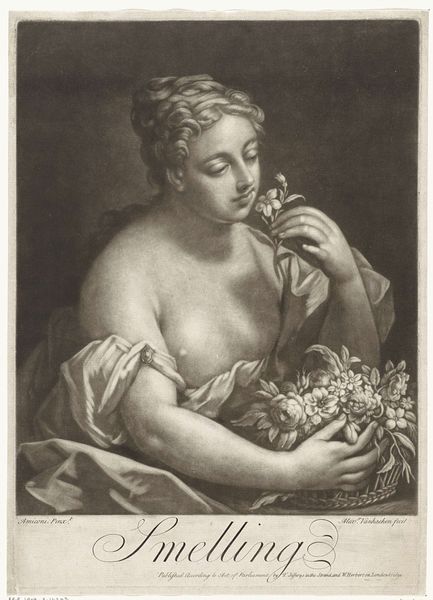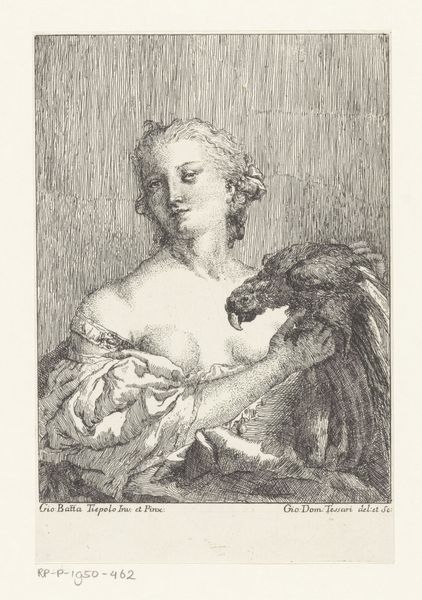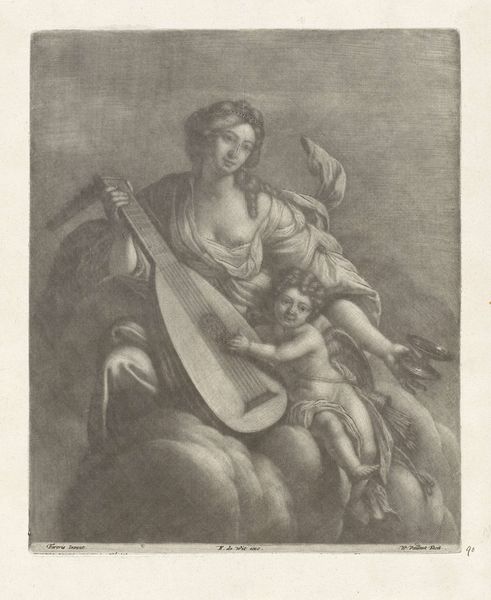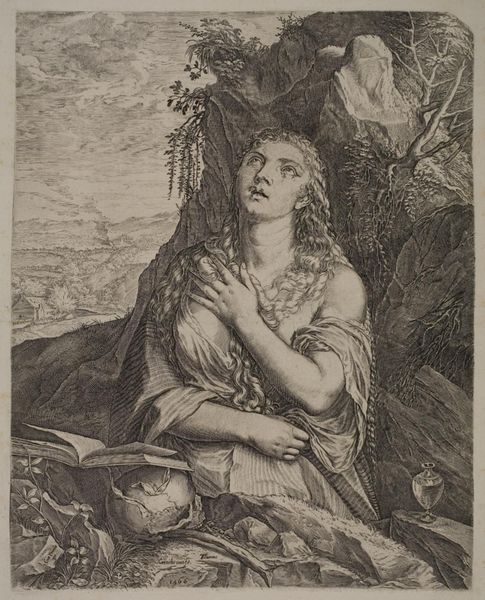
print, engraving
#
portrait
#
allegory
#
baroque
# print
#
figuration
#
history-painting
#
engraving
Dimensions: height 109 mm, width 90 mm
Copyright: Rijks Museum: Open Domain
Curator: What immediately strikes me about this print, "Allegory on Painting," dating from about 1670 to 1680 and attributed to Gerard de Lairesse, is its almost dreamlike quality. The etching medium lends itself to a soft, atmospheric haze. Editor: Yes, it's lovely. The tonal range achieved with the etching is captivating, creating depth and a sense of intimacy, almost like a secret being shared. Curator: Absolutely, and I see such classical tropes here, of course. The central figure is an idealized representation of Painting itself. We see her with attributes like the statuette, presumably of a classical figure, and the palette nearby held by an almost disaffected-looking cherub. How does it speak to the politics of imagery, do you think? Editor: Well, consider the time. The Baroque was fully established, aiming for grandiose statements. Here, though it’s an allegory, there’s a directness that speaks to a broader audience for art. Allegorical works like these functioned as vehicles for conveying specific socio-political messages or cultural values. Who was its intended audience? Was it a statement of artistic merit, destined for a collector’s album or teaching aid? Curator: The presence of the putto, almost burdened by his artistic duties, offers such an interesting contrast to the idealized allegory. And that small sculpture she holds seems to be key. Its ancient origins give painting a sense of intellectual and historical weight. The whole piece has a kind of serious-minded quality, what sort of statement do you think de Lairesse was trying to make? Editor: It’s the kind of image intended to legitimize painting, placing it among the liberal arts. See how he’s presenting art as a cultivated and intellectual endeavor, moving it away from simply craft? In a rapidly changing European environment, he sought to protect painters and their position by stressing their social and historical contributions. Curator: So, a statement of intent in a period of transition, fascinating. For me, what endures is how De Lairesse’s vision invites us to explore the timeless dialogue between artistic ideals and human imperfections, made timeless through symbols and their echoes across generations. Editor: Indeed. Ultimately, art becomes a conversation—between artist, subject, and viewer—reflecting societal aspirations and the subtle dance between image and power.
Comments
No comments
Be the first to comment and join the conversation on the ultimate creative platform.
